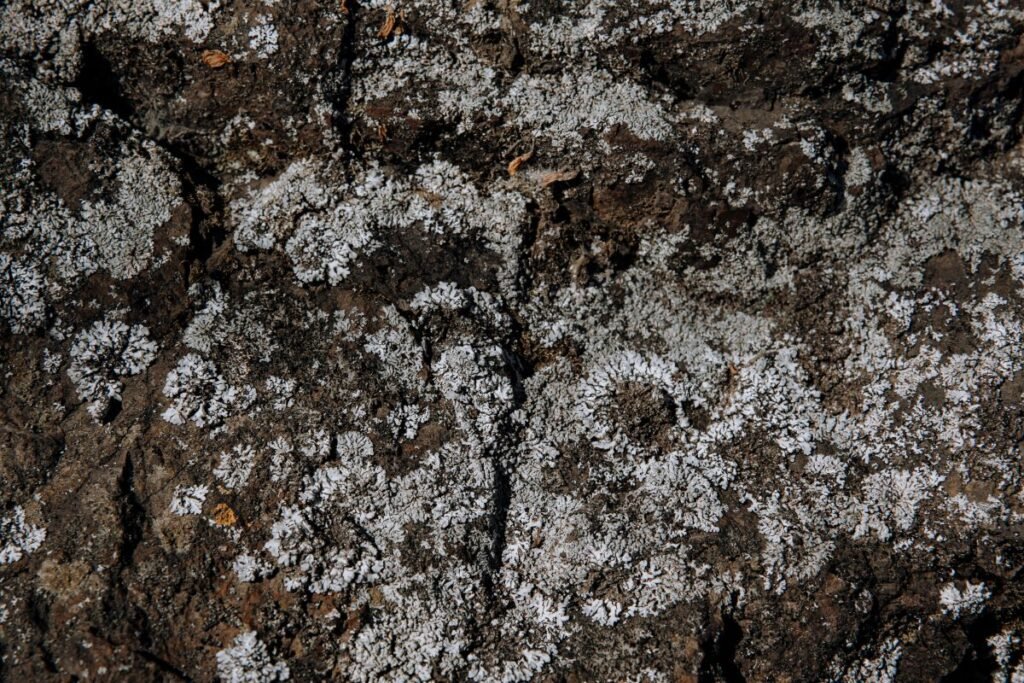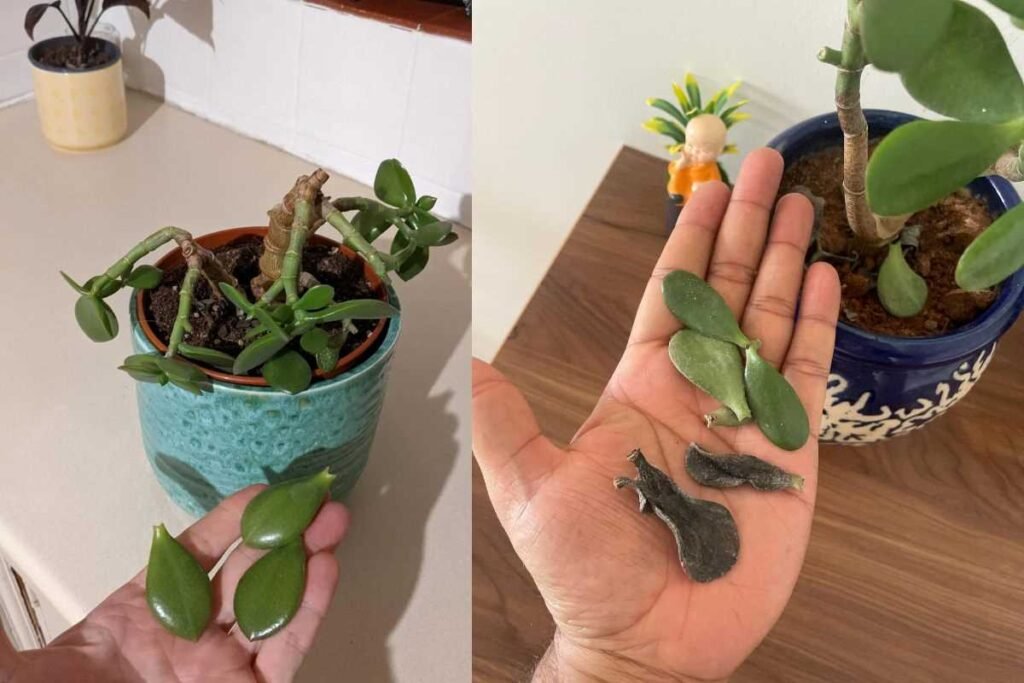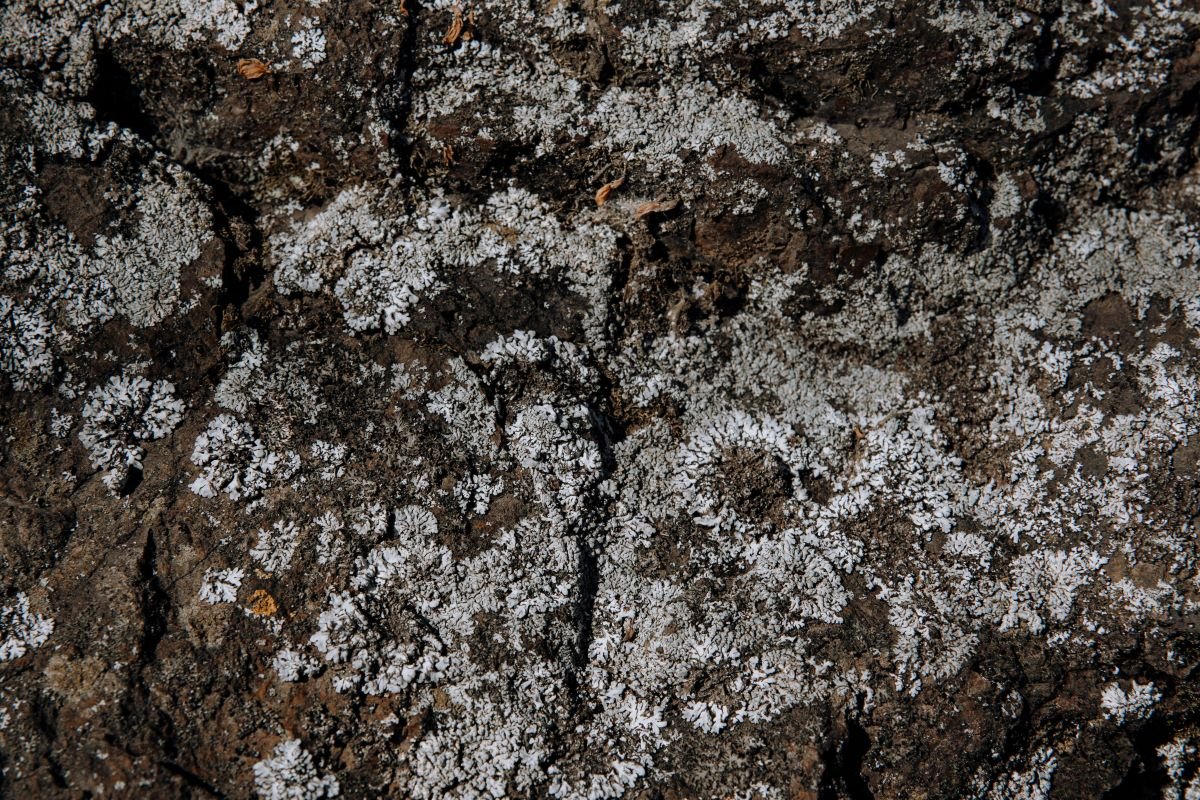Have you ever noticed a strange white layer forming on the soil around your beloved jade plant? You’re not alone! This powdery substance often catches jade plant owners by surprise, leaving them wondering if their succulent friend is in danger. Today, let’s dig into this common issue that many plant parents face.
When I first spotted white crust on my jade plant’s soil, I panicked a bit. Was my plant sick? Had I done something wrong? After years of caring for these hardy succulents, I’ve learned that this white layer isn’t usually harmful, but it does tell us something important about our care routine.
In this guide, we’ll explore why this crusty white substance appears, what it means for your jade plant, and simple steps to address it. Whether you’re a new plant parent or have been growing jades for years, you’ll find helpful tips to keep your succulent thriving.
Table of Contents
What Is That White Stuff, Anyway?

The white crust that forms on jade plant soil is most often mineral buildup. These minerals come from tap water and fertilizers. As water leaves the soil through evaporation, it leaves these minerals behind. Over time, they collect on the soil surface, forming that crusty white layer.
Think of it like a salt flat in nature. When water evaporates from a salty lake, it leaves salt crystals behind. The same thing happens in your plant pot, just on a much smaller scale!
The most common minerals in this crust are:
- Calcium
- Magnesium
- Sodium
- Potassium
- Various salts
These minerals aren’t harmful in small amounts. In fact, plants need some of them to grow. But too much can lead to problems for your jade plant.
Is White Crust Harmful to Jade Plants?

Now for the good news—in most cases, a light white crust isn’t harmful to your jade plant right away. Jades are tough plants that can handle less-than-perfect conditions. But if left unchecked for a long time, the mineral buildup can cause issues.
When mineral salts build up too much, they may:
- Make it harder for the plant to take up water
- Block nutrients from reaching the roots
- Raise the soil pH to levels that aren’t ideal for jade plants
- Cause root stress over time
Think about how we feel when we eat too much salt. Our bodies get stressed trying to process it. Plants feel a similar kind of stress when their soil has too many minerals.
The good news is that jade plants will usually show clear signs if mineral buildup is becoming a serious problem. Look for:
- Yellow or brown leaf edges (leaf burn)
- Stunted growth
- Drooping leaves despite proper watering
- White crust that keeps coming back quickly after you remove it
If you don’t see these warning signs, you likely caught the issue early!
Common Causes of White Crust on Jade Plant Soil
Let’s talk about why this happens in the first place. Understanding the causes helps us prevent the problem from coming back.
Hard Water
The most common cause is hard water. Many areas have tap water rich in minerals like calcium and magnesium. When we water our plants, these minerals stay behind as the water evaporates.
I live in an area with very hard water. My kettle gets crusty white buildup inside after just a few weeks of use. The same thing happens in plant pots, just more slowly.
Hard water isn’t bad for us to drink, but for plants, it can lead to this crusty problem over time.
Fertilizer Buildup
Another big cause is fertilizer. Most plant fertilizers contain minerals and salts. These help plants grow, but they can also build up in the soil.
This is extra true if you fertilize often or don’t flush the soil now and then. The salts just keep adding up with nowhere to go.
I once made this mistake with my first jade plant. I thought more fertilizer meant a happier plant. I ended up with a thick white crust and a stressed plant! Less is often more when it comes to feeding succulents.
Poor Drainage
Jade plants hate sitting in water. They’re succulents that evolved in dry areas, after all. Poor drainage makes mineral buildup worse because:
- Water sits in the pot longer
- More water evaporates from the soil surface
- Minerals don’t wash away through drainage holes
A pot without holes or soil that’s too dense can trap water. This leads to more evaporation from the top and more mineral buildup.
Shallow Watering
How you water matters too. Light, frequent watering that only wets the top layer of soil can make white crust worse.
When you water lightly, water doesn’t flow through the pot. It just wets the top and then evaporates, leaving minerals right at the surface where you can see them.
Deep, thorough watering—where water flows out the drainage holes—helps wash excess minerals through the soil instead of letting them collect on top.
How to Remove White Crust from Jade Plant Soil
Found white crust on your jade’s soil? Don’t worry! It’s fairly easy to fix. Here are simple steps to remove it:
Gentle Scraping
For a quick fix, gently scrape off the crusty top layer with a small tool. I use an old spoon or a popsicle stick. Be careful not to dig too deep or disturb the roots.
This method works well for light buildup. Just remove the white layer and discard it.
Top Dressing Replacement
If the crust keeps coming back, try replacing the top inch of soil:
- Carefully remove the top inch of soil from around your plant
- Throw away this crusty soil
- Replace it with fresh, well-draining succulent soil
This gives your jade a fresh start without the stress of a full repot.
Deep Watering Flush
One of the best ways to remove excess minerals is the “flush” method:
- Take your plant to a sink or tub
- Slowly pour clean water through the soil until it runs freely from the drainage holes
- Let it drain for 5-10 minutes
- Repeat once more to make sure minerals are washed away
- Allow the plant to drain fully before returning it to its spot
I do this every few months with my jade plants, even if I don’t see white crust yet. It’s a good way to prevent buildup before it starts.
Full Repotting
For serious cases or if it’s been a long time since repotting:
- Remove the jade plant from its pot
- Gently shake off old soil from the roots
- Rinse the roots carefully if there’s a lot of buildup
- Repot in fresh succulent soil
- Use a clean pot (or wash the old one thoroughly)
Repotting solves the problem completely but is more stressful for the plant. It’s best done in spring or summer when your jade is actively growing.
Preventing White Crust from Forming
As with most plant problems, prevention is better than cure. Here are tips to stop white crust before it starts:
Water Quality Solutions
The water you use makes a big difference:
Rainwater: Collecting rainwater is the best option if you can. It’s naturally free of the minerals found in tap water. I keep a rain barrel outside for watering my most sensitive plants.
Filtered Water: A basic water filter can remove some minerals. It won’t get them all, but it helps reduce buildup over time.
Distilled Water: This has almost no minerals. It’s great for plants but can get expensive if you have many.
Let Tap Water Sit: If you must use tap water, let it sit out overnight. This won’t remove minerals, but it does allow chlorine to evaporate, which is also good for your plants.
Smart Fertilizing Practices
How you fertilize can prevent mineral buildup:
Dilute Fertilizer: Use fertilizer at half the recommended strength for jade plants. They don’t need much!
Fertilize Less Often: Jade plants only need feeding during their growing season (spring and summer), and even then, once every 4-6 weeks is plenty.
Use Organic Options: Consider organic fertilizers like worm castings or compost tea. These tend to cause less salt buildup than chemical fertilizers.
I switched to a very dilute organic succulent fertilizer years ago, and my jade plants have had much less crust problems since then.
Proper Watering Techniques
The way you water matters a lot:
Water Deeply: Water thoroughly until it runs from the drainage holes. This helps wash away minerals rather than letting them build up.
Let Soil Dry: Make sure the soil dries out completely between waterings. Jade plants prefer this anyway!
Bottom Watering: Try placing your pot in a tray of water and letting the plant drink from the bottom. This can reduce mineral deposits on the surface.
Soil and Pot Considerations
Having the right setup from the start helps prevent problems:
Well-Draining Soil: Use a cacti and succulent mix, or make your own by adding perlite or pumice to regular potting soil.
Terracotta Pots: These clay pots absorb excess moisture and allow for better air flow, reducing evaporation from the surface.
Proper Drainage Holes: Always use pots with good drainage holes to prevent water from sitting in the soil.
The Science Behind Mineral Buildup
Let’s get a bit nerdy for a moment! Understanding the science helps us make better choices for our plants.
When tap water contains dissolved minerals (often calcium and magnesium carbonates), these don’t evaporate with the water. As water moves up through soil and evaporates at the surface, it carries these minerals with it. This process is called “capillary action” – the same thing that makes a paper towel soak up spills.
Over time, these minerals concentrate at the soil surface. The white crust forms when their concentration gets high enough for them to crystallize out of solution. It’s a bit like how stalactites form in caves, just happening much faster!
Fertilizers add to this process because they contain various salts—compounds of elements like nitrogen, phosphorus, and potassium that plants need. These also don’t evaporate and add to the crusty buildup.
The technical term for this problem is “salt accumulation” or “mineral salt buildup.” In farming, severe cases lead to soil salinization, which can make land unable to support crops. Our houseplants face a similar but smaller-scale challenge.
Beyond White Crust: Other Soil Surface Issues
Sometimes what looks like white crust might be something else. Let’s look at a few things that get confused with mineral buildup:
Mold and Fungus
White, fuzzy growth that appears suddenly might be mold, not mineral crust. Unlike mineral buildup, mold:
- Looks fuzzy or velvety
- May appear suddenly after overwatering
- Often grows in patches rather than evenly across the soil
Mold itself isn’t usually harmful to jade plants, but it signals that the soil is staying too wet, which can lead to root rot—a much bigger problem!
Mealybugs
These pests look like small white cottony spots. Unlike soil crust, mealybugs:
- Move (very slowly)
- Appear on stems and leaves, not just soil
- Look more like tiny cotton balls than a crusty layer
Mealybugs are a pest that should be treated right away, as they suck sap from your plant and can cause serious damage.
Salt Crystals vs. Fertilizer Pearls
Sometimes slow-release fertilizer beads can be mistaken for salt buildup. These are usually:
- More uniform in size and shape
- Often colored (though some are white)
- Present only after you’ve added this type of fertilizer
These aren’t harmful and will dissolve slowly to feed your plant.
The Relationship Between White Crust and Plant Health
While a little white crust doesn’t hurt your jade plant right away, it can signal potential care issues:
Water Stress Indicators
The presence of white crust often means your plant is experiencing some level of water stress. This might show up as:
- Leaf wrinkling
- Slower growth than normal
- Leaves that feel less firm
- Slight discoloration
These signs don’t always mean disaster, but they suggest your jade could be happier with some adjustments to its care.
Root Health Connections
The root system is where your jade plant interacts with these minerals. Too much mineral buildup can:
- Make it harder for roots to absorb water (due to osmotic pressure)
- Create an unwelcoming soil environment
- Stress younger, more delicate roots first
Healthy roots mean a healthy plant above ground. Addressing mineral buildup helps keep the entire system working well.
Long-term Effects if Ignored
If white crust is left untreated for months or years, you might see:
- Chronic slow growth
- Increased vulnerability to pests and disease
- Eventual decline in plant health
- Difficulty regrowing if propagated
I once inherited a jade plant that had been struggling with untreated mineral buildup for years. It took nearly a year of careful tending to bring it back to full health!
Seasonal Considerations for Jade Plant Care
White crust tends to show up more during certain times of year. Understanding these patterns helps with prevention:
Summer Challenges
In summer, white crust often appears faster because:
- We water more frequently in hot weather
- Water evaporates more quickly from the soil surface
- Plants use more nutrients, so we might fertilize more
To counter this, I flush my jade plants’ soil more often in summer and make sure they’re not getting too much fertilizer.
Winter Adjustments
In winter, different factors come into play:
- Indoor heating reduces humidity and increases evaporation
- Plants grow less, so minerals aren’t used as quickly
- Overwatering is more common since plants need less water
During winter, I water less frequently but still thoroughly when I do water. This helps prevent both mineral buildup and root rot.
Special Considerations for Different Types of Jade Plants
Did you know there are several varieties of jade plants? While they all belong to the Crassula family, different types may show varying sensitivity to mineral buildup:
Common Jade (Crassula ovata)
The standard jade plant is fairly resistant to mineral issues. It has:
- Thick, woody stems
- Oval, fleshy leaves
- Strong root systems that can handle some stress
This traditional jade is what most people grow, and it’s quite forgiving of occasional mineral buildup.
Variegated Varieties
Jades with white or cream patches on their leaves (like ‘Tricolor’ or ‘Sunset’) may show issues sooner because:
- They grow more slowly
- They have less chlorophyll for processing nutrients
- They’re generally more sensitive to care problems
I’ve found my variegated jades need more careful water quality management than my regular green ones.
Dwarf Jade Varieties
Smaller jade varieties like Crassula ‘Minima’ or ‘Hobbit’ have:
- Smaller pot sizes that can concentrate minerals faster
- Less soil volume to dilute mineral buildup
- Often more compact growth that can trap humidity
These cute little jades benefit from more frequent soil refreshing to prevent crust buildup.
Community Wisdom: What Other Jade Growers Do
I’ve talked to many fellow jade plant enthusiasts about this issue. Here are some creative solutions they’ve shared:
Creative Prevention Methods
Some jade growers swear by these unique approaches:
- Adding a layer of decorative rocks or pebbles on top of the soil to prevent surface evaporation
- Using a drop of horticultural oil on the water surface to reduce evaporation (though I haven’t tried this myself)
- Watering with leftover aquarium water, which contains beneficial microorganisms that may help break down mineral deposits
Regional Adaptations
People in different climates have developed regional solutions:
- In dry climates: Using humidity trays to reduce the evaporation rate
- In rainy areas: Growing jades under covered porches to control exactly how much water they receive
- In areas with very hard water: Creating rain collection systems specifically for watering sensitive plants
These approaches show how adaptable jade care can be based on local conditions!
When to Seek Help for Your Jade Plant
While white crust is usually manageable at home, some situations call for extra help:
Warning Signs of Serious Problems
Consider getting advice if you see:
- White crust returning within days after removal
- Jade leaves turning yellow and dropping despite care adjustments
- Plant wilting even with proper watering
- Root tips appearing brown or black when you check them
These could signal more serious issues beyond simple mineral buildup.
Resources for Plant Health
If you’re concerned, look into:
- Local plant nurseries often offer free advice
- University extension offices in many areas provide plant diagnostics
- Online jade plant forums where experienced growers share knowledge
- Soil testing kits to check exact mineral content
Final Thoughts on Jade Plant Soil Health
Caring for jade plants is a rewarding journey. These resilient succulents have been cherished houseplants for generations, and for good reason. They’re beautiful, long-lived, and generally forgiving of the occasional care mistake.
When white crust appears on your jade’s soil, take it as a friendly reminder that your plant is communicating with you. It’s asking for a small adjustment to its care routine, not signaling disaster.
By understanding why this crust forms and taking simple steps to address it, you’re building a stronger relationship with your plant. You’re learning to read its needs and respond appropriately—the essence of good plant parenthood.
Remember that jade plants can live for decades—even becoming family heirlooms passed down through generations—when given proper care. A little attention to mineral buildup is a small investment in your jade’s long-term health and happiness.
Have you noticed white crust on your jade plant’s soil? Try some of the solutions we’ve discussed, and let me know how they work for you. Every plant and growing environment is unique, so sharing our experiences helps us all become better plant caretakers.
Happy growing!

My name is Shahriar Robin, and I’m the creator of JadePlants.org. Growing up in a village, I developed a deep connection with nature from a young age. Plants and gardening have always been a part of my life, and jade plants, with their resilience and elegance, have held a special place in my heart. Over the years, I’ve learned so much about these fascinating plants, and I created this site to share that knowledge with you—completely free of charge.

